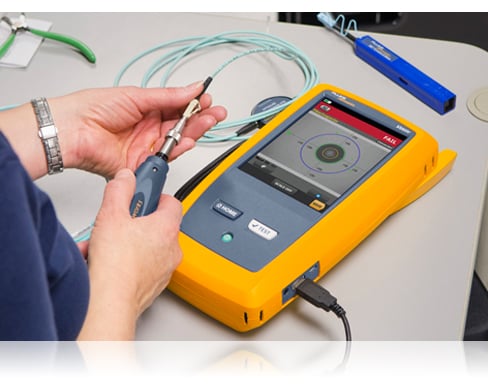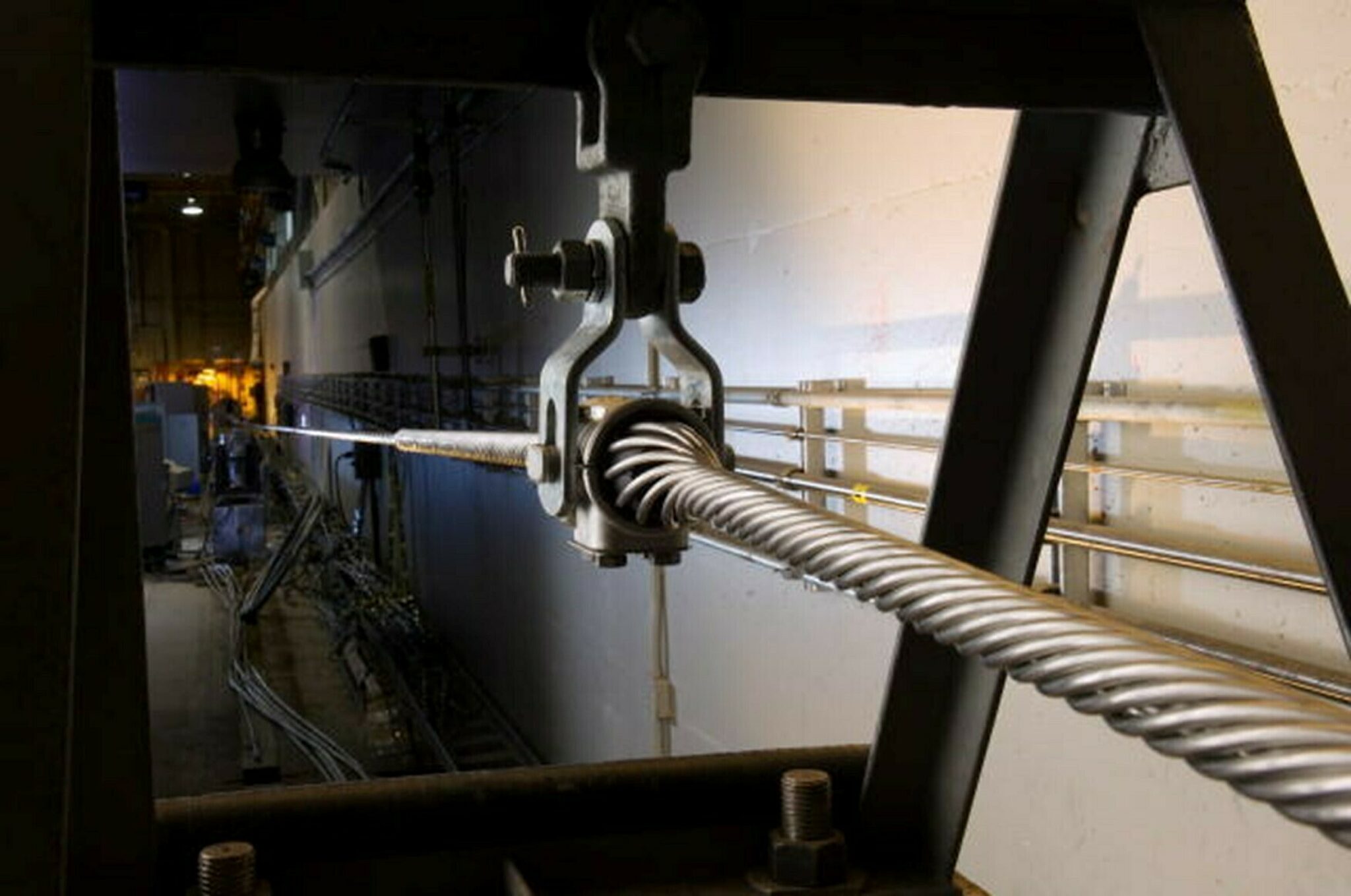Discover the Value of Optical Fiber Testing in Modern Telecom
In the world of modern-day telecommunications, the importance of optical fiber screening can not be overemphasized, as it acts as the backbone for making sure network integrity and efficiency. By executing routine screening methods, drivers can preemptively identify prospective problems such as signal deterioration, hence safeguarding against disruptions that might confirm costly. Advanced techniques like Optical Time-Domain Reflectometry play a critical function in this procedure, yet several may neglect the wider effects of these practices. What are the details benefits that routine testing deals, and how might it shape the future landscape of telecoms?

Understanding Optical Fibre Screening
Optical fiber testing is an essential procedure in telecommunications that guarantees the integrity and performance of fiber optic networks. This screening includes a variety of treatments developed to assess the physical and useful features of optical fibres - optical fibre testing equipment. Secret parameters analyzed consist of optical power loss, data transfer capability, and fault location, which are important for maintaining top quality communication links
The screening procedure commonly involves the use of specialized equipment such as Optical Time-Domain Reflectometers (OTDR) and Optical Power Meters. OTDRs are employed to recognize and identify mistakes, entwines, and ports within the fibre, while power meters measure the transmitted light signal stamina to ascertain performance.
Furthermore, screening is conducted at numerous phases, including during installment, maintenance, and troubleshooting, to ensure that the network meets sector requirements and operational needs. Conformity with standards set by companies like the International Telecommunication Union (ITU) and the Telecoms Market Association (TIA) is vital.
Advantages of Regular Evaluating
Routine testing of optical fibers returns numerous advantages that substantially boost network dependability and efficiency. Among the primary benefits is the early discovery of possible problems, such as breaks or deterioration in the fibre, which can bring about pricey downtime if left unaddressed (fibre testing equipment). By identifying these problems proactively, telecoms providers can decrease service disturbances and make certain constant connection for their consumers
In addition, normal screening aids to keep the honesty of signal top quality. As optical fibers age, their efficiency can be influenced by variables such as environmental conditions and physical tension. Routine analyses permit the surveillance of signal loss and total transmission efficiency, ensuring that the network runs at optimum degrees.
An additional considerable advantage is conformity with market standards. Routine screening supports adherence to regulative demands, thus alleviating lawful and economic dangers connected with non-compliance. It improves the overall life-span of the fiber framework by assisting in timely maintenance and repairs.

Typical Evaluating Techniques
Evaluating optical fibers utilizes numerous techniques to make sure the honesty and efficiency of telecoms networks. Among one of the most usual methods is Optical Time Domain Reflectometry (OTDR), which evaluates the whole length of the fiber by sending out a pulse of light and determining the reflections caused by flaws or breaks. This technique provides detailed info concerning the area and severity of mistakes.
Another common technique is using Optical Power Meters, which gauge the quantity of light sent via the fiber. This strategy assists establish the loss of signal toughness, ensuring that it meets industry criteria. In Addition, Aesthetic Mistake Locators (VFL) are utilized to determine breaks or serious bends in the fibre by forecasting a visible laser light into the cable television.
Insertion loss testing is additionally important, as it evaluates the loss of signal power arising from links and entwines within the network. Moreover, making use of Polarization Mode Dispersion (PMD) testing assesses the impact of fibre characteristics on signal honesty.
Each of these approaches plays a vital duty in keeping the performance and dependability of optical fiber networks, ultimately adding to smooth telecommunications procedures.
Effect On Network Efficiency
The integrity and performance of optical fibre networks straight affect overall network performance. In modern telecommunications, the efficiency of data transmission relies heavily on the top quality of the optical fibers made use of. Any kind of degradation in the fibre's problem-- whether due to physical damages, contamination, or too much bending-- can lead to increased depletion and signal loss, significantly impacting information stability and speed.
Regular optical fiber screening is crucial to identify and remedy possible problems before they show up as network failings or stagnations. Techniques such as Optical Time Domain Reflectometry (OTDR) and insertion loss screening enable technicians to gauge the performance of fiber links precisely. These examinations not only assess the physical problem of the fibres however additionally ensure conformity with sector standards, consequently guarding the network's reliability.
Additionally, a well-maintained optical fiber network adds to reduced operational expenses and boosted customer fulfillment, as end-users experience fewer disturbances and higher information rates. Ultimately, the focus on extensive optical fiber screening practices acts as a foundation for maintaining robust telecommunications framework, making sure that solution companies can satisfy the expanding needs for transmission capacity and connection in today's digital age.
Future Patterns in Examining
As we look in advance, developments in innovation are positioned to improve optical fibre testing in telecommunications. The surge of automation and artificial intelligence (AI) is anticipated to boost the efficiency and accuracy of screening procedures. Automated screening systems can perform comprehensive assessments with minimal human intervention, substantially lowering the potential for mistakes and speeding up time-to-deployment.
In addition, the integration of artificial intelligence formulas will enable anticipating upkeep, enabling network providers to predict potential concerns before they escalate into failings. This aggressive method not only improves network dependability but additionally optimizes functional expenses.
An additional emerging fad is the development of mobile screening tools that supply real-time evaluation - optical fibre diameter analyser. These gadgets will certainly empower service technicians to carry out on-site diagnostics rapidly, facilitating quicker resolutions and boosting service top quality
The development of 5G networks additionally necessitates the advancement of testing techniques. As data transfer needs enhance, traditional screening techniques might no longer are sufficient. Ingenious solutions such as optical time-domain reflectometry (OTDR) and progressed spectral evaluation will end up being important in ensuring the honesty and performance of high-speed links.

Verdict
To conclude, optical fiber testing is necessary for guaranteeing review the honesty and reliability of modern-day telecommunications networks. Normal testing methods not only assist identify possible problems such as signal loss and mistakes but click over here now likewise add to improved network efficiency and customer contentment. As the demand for smooth connectivity proceeds to visit here expand, the adoption of sophisticated screening approaches will play a critical function in preserving high-grade network standards and supporting the advancing landscape of telecommunications.